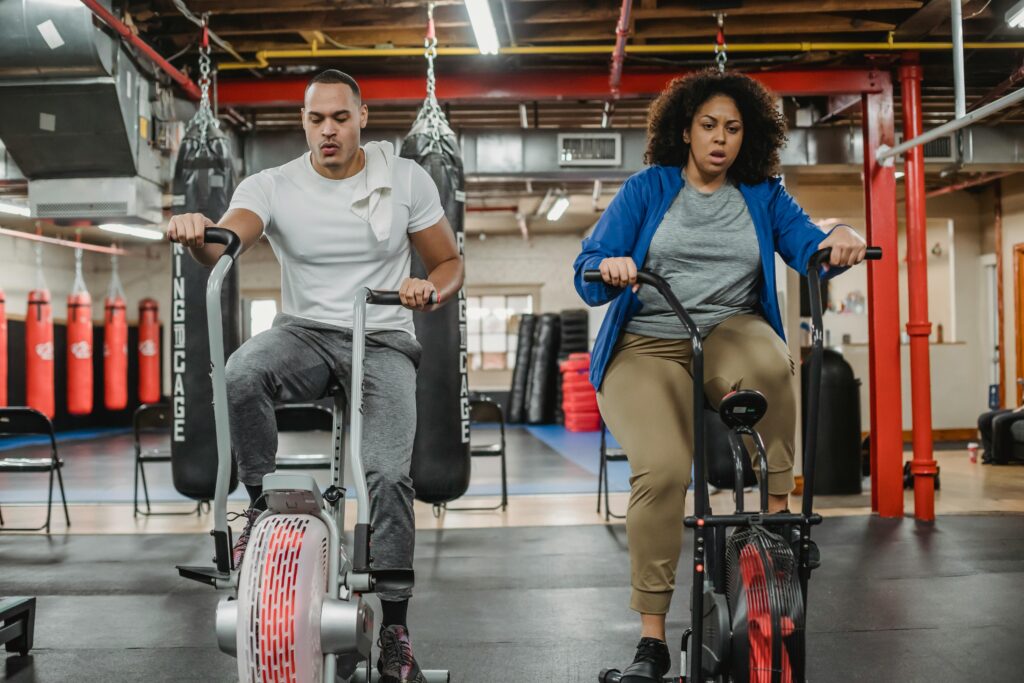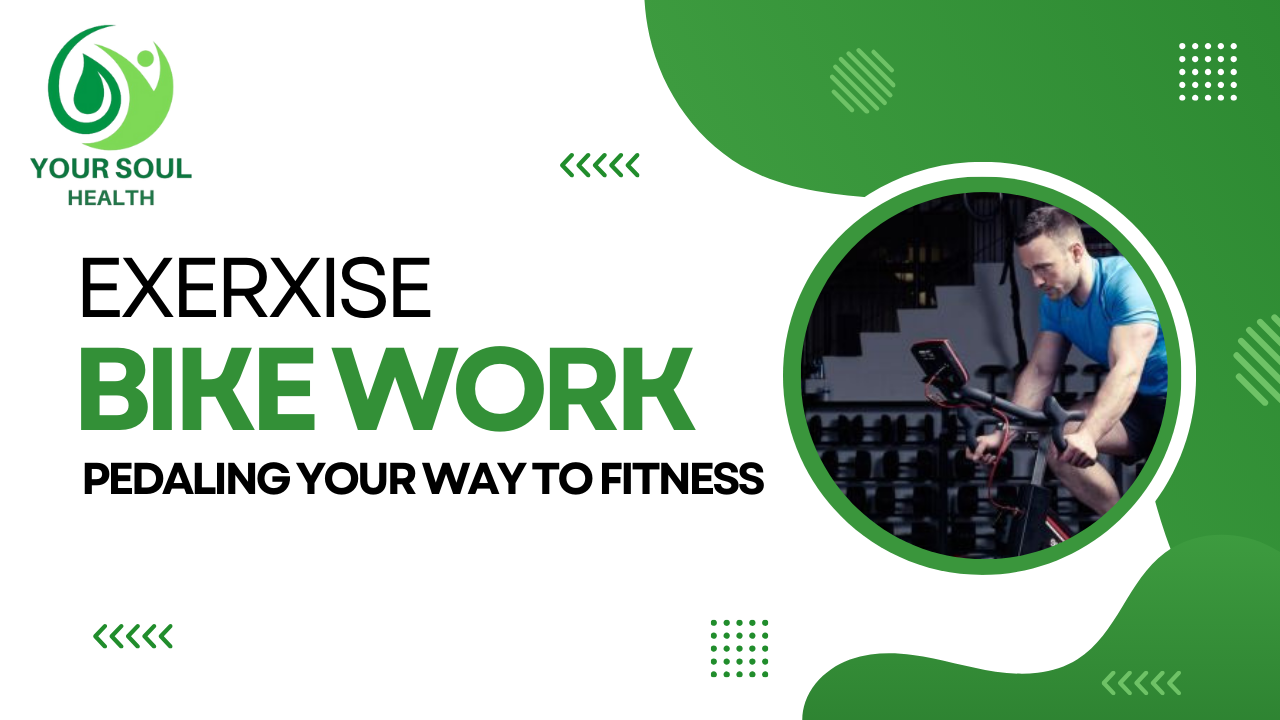Discover the comprehensive guide on what muscles does the exercise bike work. In the quest for a healthier lifestyle, many turn to exercise bikes as a convenient and effective way to stay fit. But have you ever wondered what muscles are actually being worked when you pedal away on that stationary bike? Let’s dive into the mechanics of this popular workout and explore which muscle groups get the most benefit.
When you hop onto an exercise bike, you’re not just taking a leisurely spin. You’re engaging in a full-body workout that targets various muscle groups, helping you build strength, endurance, and cardiovascular health.

What Muscles Does The Exercise Bike Work For Beginners?
For beginners, the exercise bike is a fantastic tool for working various muscle groups. Primarily, it targets the lower body muscles, including the quadriceps, hamstrings, and calf muscles. As you pedal, these muscles engage to propel the pedals, providing a great cardiovascular workout while also toning and strengthening these muscle groups.
Additionally, the exercise bike also engages the gluteal muscles, helping to firm and shape the buttocks. For those looking to improve their overall lower body strength and endurance, the exercise bike offers a low-impact option that is gentle on the joints, making it an ideal choice for beginners aiming to build fitness and stamina.
What Muscles Does The Exercise Bike Work For Glutes?
The exercise bike primarily targets the gluteus maximus, the largest muscle in the glutes, as well as the gluteus medius and gluteus minimus to a lesser extent. As you pedal, your glutes engage to propel the pedals downward and backward. This action activates and strengthens these muscles over time, contributing to better tone and definition in the buttocks.
Additionally, the stabilizing muscles surrounding the pelvis and hips, such as the hip abductors and adductors, also get a workout while using the exercise bike, further supporting overall lower body strength and stability. Regular cycling on an exercise bike can help build endurance, improve cardiovascular health, and sculpt the glutes for a more toned and defined appearance.
Glutes: Maximizing the Burn
Your gluteal muscles, or glutes, are activated during the entire pedaling motion. They work to stabilize your hips and pelvis while also contributing to the power of each pedal stroke. Strong glutes not only improve cycling performance but also help prevent injuries.
The Power of Pedaling
Pedaling is the foundation of any cycling exercise, whether indoors or outdoors. It’s a repetitive motion that engages multiple muscles simultaneously, making it an efficient way to burn calories and improve fitness levels.
Quads: Your Pedal Pushers
At the front of your thigh, you’ll find the quadriceps muscles. These are the primary movers when it comes to pedalling. As you push down on the pedals, your quads contract, extending your knee and propelling the pedal forward.
Hamstrings: Keeping it Balanced
Located at the back of your thigh, the hamstrings act as antagonists to the quadriceps. While they aren’t as actively engaged during the downward motion of pedalling, they play a crucial role in controlling the movement and providing stability.
Calves: The Silent Strength
Although often overlooked, the calf muscles play a significant role in cycling. As you push down on the pedals, your calves engage to point your toes downward, providing additional force and ensuring a smooth pedal stroke.
Core: Stability in Motion
Maintaining proper posture and stability on the bike requires a strong core. Your abdominal and lower back muscles work together to keep you balanced and supported throughout your ride, preventing excessive strain on your spine.

Upper Body: Surprising Support
While the focus of cycling is primarily on the lower body, your upper body also plays a role in supporting your posture and distributing weight. Your arms, shoulders, and upper back help you maintain a comfortable riding position and assist in steering and balance.
Benefits Beyond Muscles
Beyond building muscular strength and endurance, cycling offers a host of additional benefits. It’s a low-impact exercise that’s gentle on the joints, making it suitable for people of all fitness levels. Regular cycling can also improve cardiovascular health, boost mood, and even enhance cognitive function.
Exercise bike legs before and after
Before incorporating regular exercise bike sessions into their routine, Jane’s legs often felt fatigued and lacked strength. Climbing stairs was a struggle, and she often experienced discomfort after long periods of standing. However, after consistently using the exercise bike as part of her fitness regimen, Jane noticed a remarkable transformation in her legs. They became stronger, more toned, and capable of enduring activities with much greater ease.
Climbing stairs became effortless, and she no longer experienced the same level of discomfort after standing for extended periods. The exercise bike not only improved the appearance of her legs but also enhanced their overall functionality, contributing to a healthier and more active lifestyle.
Stationary bike workout to build muscle
Stationary bike workouts can be an effective method for building muscle, particularly in the lower body. By adjusting the resistance levels on the bike, individuals can simulate climbing hills or sprinting, which engages the muscles in the legs, including the quadriceps, hamstrings, calves, and glutes.

Additionally, maintaining proper form and incorporating intervals of high intensity can further enhance muscle development. While stationary biking primarily targets the lower body muscles, it also engages the core for stabilisation and balance, contributing to overall muscle strength and endurance. Consistent and progressive training on a stationary bike, coupled with proper nutrition and rest, can lead to noticeable gains in muscle mass and tone over time.
FAQs
1. Does cycling on an exercise bike help tone my legs?
Yes, cycling is an excellent way to tone and strengthen your leg muscles, including your quads, hamstrings, and calves. It’s a low-impact exercise that’s effective for building lean muscle mass.
2. Can cycling on an exercise bike help with weight loss?
Absolutely! Cycling is a calorie-burning activity that can aid in weight loss when combined with a healthy diet. The continuous pedalling motion helps elevate your heart rate, increasing calorie expenditure and promoting fat loss.
3. How often should I cycle on an exercise bike to see results?
The frequency of your cycling workouts will depend on your fitness goals and schedule. Aim for at least three to five sessions per week, with each session lasting 30 minutes to an hour. Consistency is key to seeing results.
4. Will cycling on an exercise bike make my thighs bigger?
While cycling can help build muscle in your thighs, it’s unlikely to bulk them up significantly. The resistance level and intensity of your workouts play a role in muscle development, but cycling typically results in leaner, more toned legs rather than bulky muscles.
5. Is cycling on an exercise bike suitable for beginners?
Yes, cycling on an exercise bike is an excellent option for beginners due to its low-impact nature and adjustable intensity levels. Start at a comfortable pace and gradually increase the duration and intensity of your workouts as your fitness improves.
11. Conclusion
Cycling on an exercise bike is a versatile and effective way to work multiple muscle groups while improving your overall fitness. By understanding the muscles involved and the benefits it offers, you can pedal your way to a healthier, stronger body.
So, what are you waiting for? Hop on that bike and start pedaling your way to fitness!

I am a health writer and blogger based in the US and UK. I have been with the health department for six years. And I give advice on various health problems and solutions. I have a lot of experience in health matters and I share it here.

